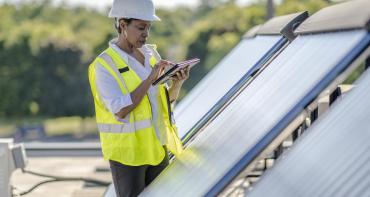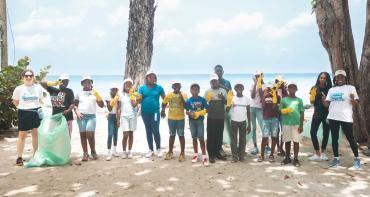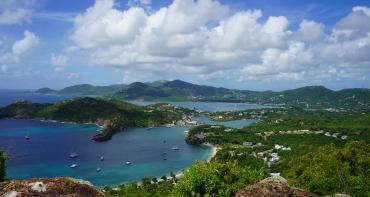The Commonwealth Blue Charter is highlighting case studies from the Commonwealth and beyond, as part of a series to spotlight best practice successes and experiences.

Share your own case study with us
“Iceland is one of the largest fisheries nations in the North Atlantic and is proud of its reputation in sustainable fisheries. I am therefore happy to announce that we will continue to contribute to responsible fisheries, following the advice of scientists to the fullest in our total catch decisions. For the future we need to further strengthen research and make sure we have the best possible information at each point in time to base reliable decisions on.” – Icelandic Minister of Fisheries Sigurdur Ingi Johannsson, 2014
Summary
The fishing industry is one of the main pillars of the Icelandic economy. Cod makes up the largest proportion of the catch of coastal vessels and is currently the second most important species in terms of weight landed and the most important on average in terms of volume. Following concern about increasingly unsustainable exploitation, a comprehensive statutory system of individual transferable quotas (ITQs) was introduced in 1990, giving fishers permanent quota shares as an incentive to take a long-term view on the harvesting and management of the resources. Species-specific total allowable catches are set by the regulator and a proportion (quota) allocated to individual fishers or fishing companies based on fishing experience (grandfather rights). In 2009, a licensed coastal fishery system was introduced for hand-lining and longlining (mainly cod) in the summer months, to try and ease access for new entrants.
The ITQ system works alongside other management measures such as the closure of spawning grounds as well as restrictions on gear types. The ITQ reform process was driven primarily by scientists, politicians and public servants. On-going stock assessment surveys are conducted in close cooperation with the fishing industry.
The economic performance of the fishing industry has improved since the quota system and other supporting measures were introduced. However, it has led the coastal fisheries sector to consolidate, making it difficult for new fishers to enter because of the cost of purchasing a licence.
Icelandic cod are currently certified by the Marine Stewardship Council and included in the Food and Agriculture Organization-based Iceland Responsible Fisheries Management Certification Programme.
The issue
Fishing in Iceland expanded considerably after World War II following a significant increase in the size of the fleet and technological advances.
Increasingly unsustainable exploitation became a serious problem and this continued to be a concern despite the introduction of various restrictions, such as limitations on the number of days at sea and on the type of gear used, as well as setting total allowable catches (TACs). Subsides for scrapping fishing vessels and restrictions on access by foreign fleets were also introduced but, despite these, fisheries continued to suffer from overexploitation. The need for urgent reform was highlighted by Iceland’s Marine Resource Institute in the 1970s and 1980s.
The fishing industry is one of the main pillars of the Icelandic economy. At the present time, cod makes up the largest proportion of the catch of coastal vessels and it is the third most important species in terms of weight landed.
The response
A comprehensive statutory system of individual transferable quotas (ITQs) was introduced in 1990, giving fishers permanent quota shares as an incentive to take a long-term view on the harvesting and management of the resources. The Fisheries Act 1990 describes the objectives as “preservation and efficient use of resources to lay the foundation for long-term employment and settlement in the country”.
Species-specific TACs are set on an annual basis by the regulator and a proportion (quota) is allocated to individual fishers or fishing companies based on fishing experience (grandfather rights). Quota shares can be leased or sold on, for example if vessels opt to leave the industry.
The smallest (coastal) boats were originally exempt, to conserve employment in rural villages, but, after attempts to reduce the effort of these vessels failed, they were also required to enter the ITQ system. In 2009, a licensed coastal fishery system was introduced for hand-lining and longlining (mainly cod), with around 10 per cent of the quota reserved for coastal fisheries to try and safeguard this fishery and ease access for new entrants.
There are four defined coastal fishing zones, and fishers apply to fish in one of these zones in four-monthly blocks (three fishing periods each year). Once allocation has occurred, fishing is open access, with fishers competing to catch as much fish as quickly as possible but under certain conditions. There is a 650 kg/day landing limit, with penalties for overfishing and restrictions on permitted days at sea as well as on hours of fishing each day.
The ITQ system works alongside other management measures such as the closure of spawning grounds and areas to protect juvenile fish, as well as restrictions on gear types for certain time periods and fishing grounds.
Partnerships and support
The ITQ reform process was primarily driven by scientists, politicians and public servants with limited initial stakeholder involvement, as the government was keen to address what was seen as an urgent threat to an economically important industry.
Stock assessment surveys are conducted by the Marine and Freshwater Research Institute, which works in close cooperation with the fishing industry and other stakeholders. Formal committees and focus groups have been established to enhance understanding, trust and quality of marine research.
Results, accomplishments and outcomes
Fishing effort has reduced drastically and fishing pressure on cod in Icelandic fishing grounds has declined; in 2019, the International Council for the Exploration of the Sea reported that it was at a historic low. The spawning stock biomass of cod has stabilised and has begun to recover, and recruitment has been relatively stable since 1988 (see figures below).
The economic performance of the fishing industry has improved significantly since the quota system was adopted. Higher productivity and increased focus on value and quality has replaced the early emphasis on quantity and tonnage. This is not entirely attributable to the ITQ system, however: several other important factors, such as technological progress, effective auction markets and an increasingly efficient marketdriven industry, have also played a part. The successful economics of the Icelandic fisheries are such that the industry is self-financing with no government subsidy required.
Icelandic cod caught by gill/fixed net, longline and demersal trawls are currently certified by the Marine Stewardship Council and, since 2010, included in the Food and Agriculture Organization-based Iceland Responsible Fisheries Management Certification Programme.

The coastal sector has consolidated, making it more difficult to enter on account of higher costs (investment/capital). The economic and environmental consequences have been positive but there have also been social implications. For example, the number of employees in fisheries has decreased by 40 per cent in the past 25 years, as the sector has become much more efficient. On the other hand, some communities, which were previously not considered fishing villages, such as Arnarstapi, have grown in size, with fishing becoming a new and important part of their economy.
Challenges
While there have been overall economic gains there have been both winners and losers.
The level of initial stakeholder involvement was limited, with some industry stakeholders, such as fishers and people whose livelihoods depended to a great extent on fishing, not explicitly engaged. This was deliberate, to speed up the process to avert a crisis, but required subsequent agreement over exemptions and amendments to the system as well as efforts to better distribute the benefits of this common resource, such as regional quotas to help communities rather than the fishing firms directly.
The small vessel fleet (<15 metres), operated largely from small fishing villages, was severely affected, as optimisation and aggregation of quota shares by the largest seafood companies left small traditional fishing villages with little or no fishing rights. Around 75 per cent of the quotas now belong to 25 of the largest vessel operators and fishing companies in Iceland. Concentration of fishing rights has also gravitated towards a few big fishing harbours.
Cod catches are now largely in line with TACs; however, there remain some infractions by coastal fleets exceeding their landing allowance. There are substantial financial penalties in such cases, and the government is considering whether any further adjustments to the system are required.
Key lessons learnt
Complications, such as the need for piecemeal amendments, can arise with reforms where certain fleet segments are not treated in the same way, as demonstrated by the initial exemption of small-scale fishers from the ITQ system.
Regional quotas have been important to ensure some quota is given to towns or regions where fishing is the mainstay of the economy and therefore to help communities rather than the fishing firms directly. The effects differ widely from one region to another; they have clearly benefited the region around the capital because of its proximity to some of the regions that have received such quotas.
The initial free allocation of quotas via the “grandfathering” scheme raised concerns about the distribution of benefits of what is a common property resource to a few individuals/companies. A resource rent tax, introduced in 2012, sought to address this, with the monies raised – based on the profit margin of harvesting different species – going into the general government budget to be shared throughout the country. The level of this tax remains a controversial issue: some sectors see it as too onerous and some see it as insufficient.
The changes were driven by but not exclusively the result of the ITQ system. For example, countrywide wet fish auction markets helped increase specialisation and led to more stability in the supply of the raw material and more efficient marketing.
Sound inspections systems that control fisheries and catches are needed as well as a robust monitoring framework and scientific advice to maintain a more sustainable ecosystem and build an efficient and viable industry.
The economic element has become more sustainable but there have been social implications. The aim was to try and address these through community quotas and, although these have stopped a decline and even increased the focus on fisheries in some villages, others in less favourable areas for fishing activity have lost out.
The reform was driven mainly by economic concerns and the fact that the stock was on the brink of collapse, but other issues such as social justice were also considered important.
Download this case study (PDF)
View all Case Studies
Media contact
- Josephine Latu-Sanft Senior Communications Officer, Communications Division, Commonwealth Secretariat
- +44 20 7747 6476 | E-mail



